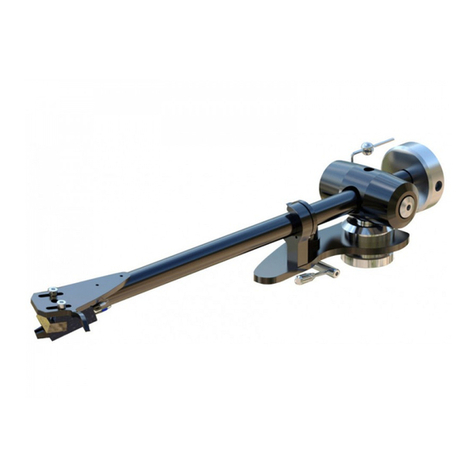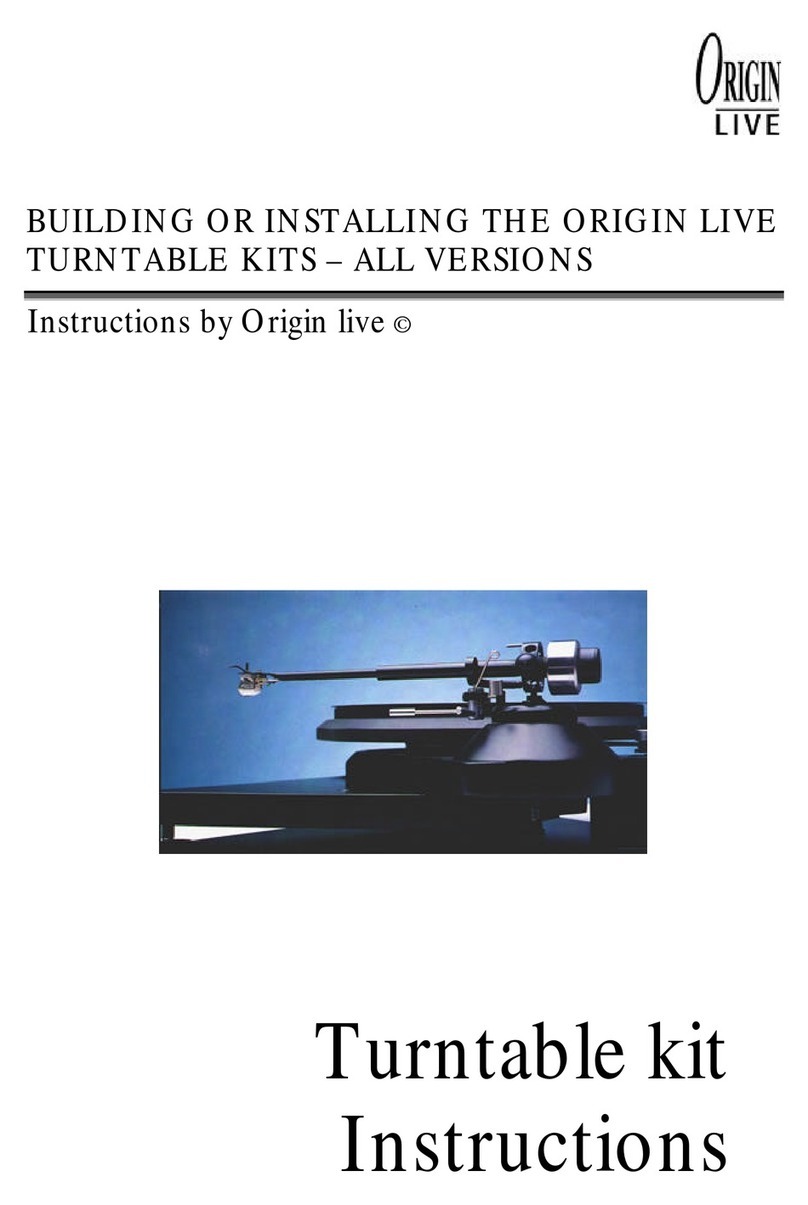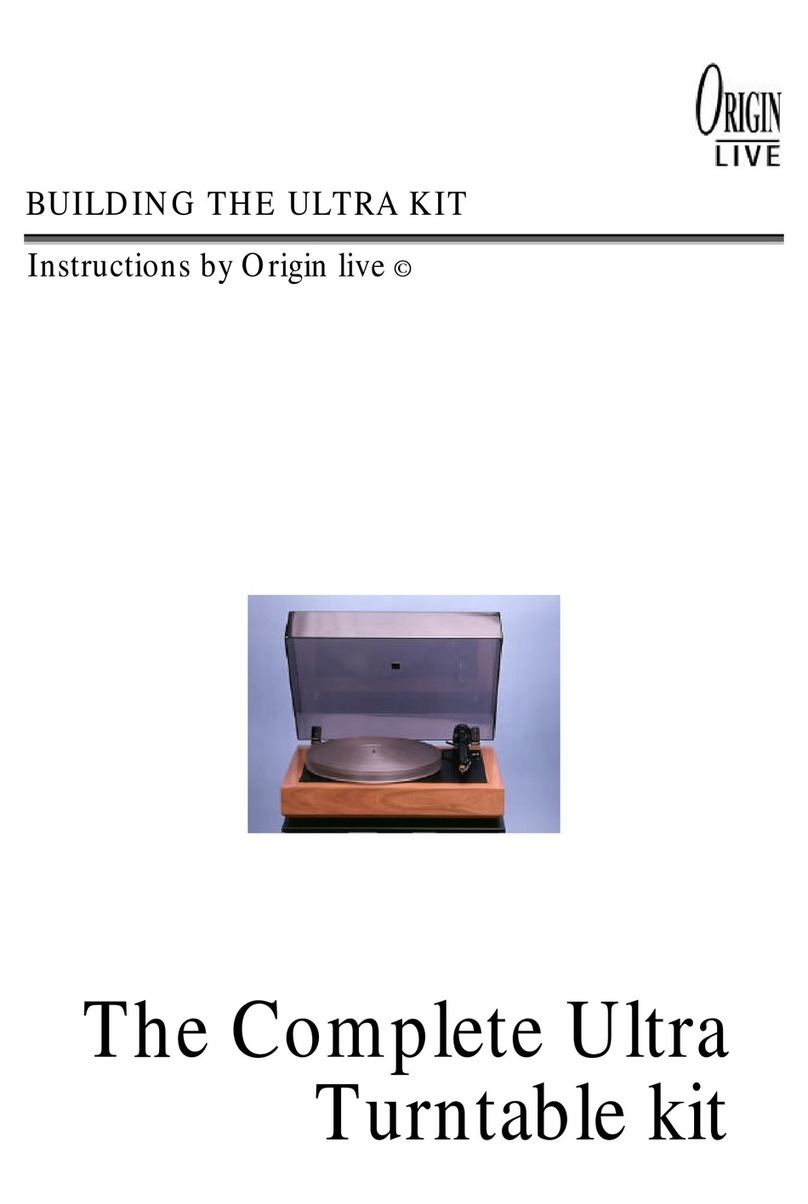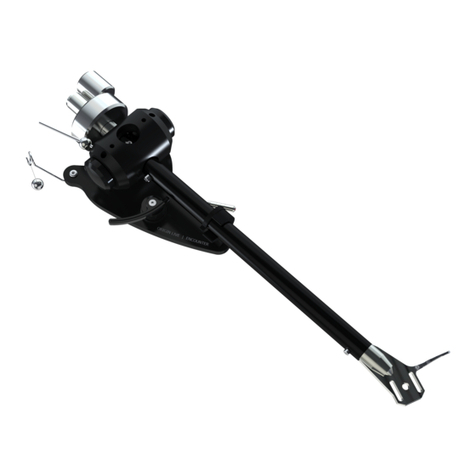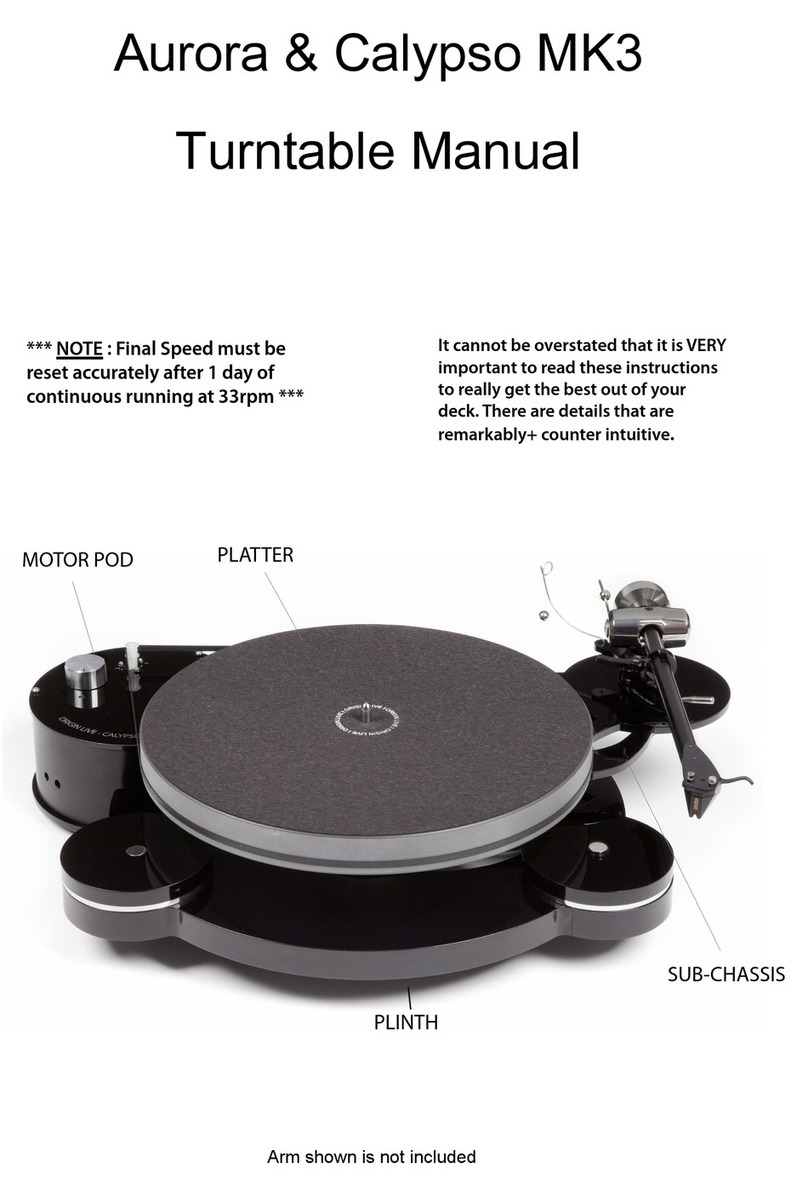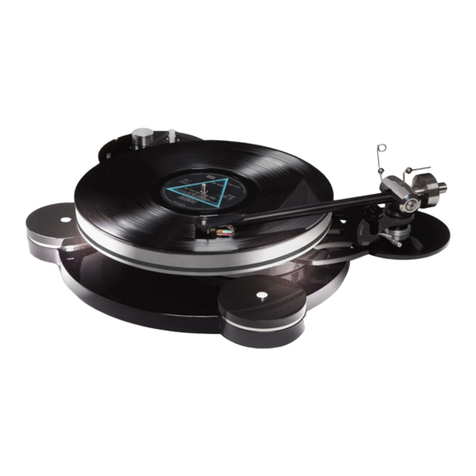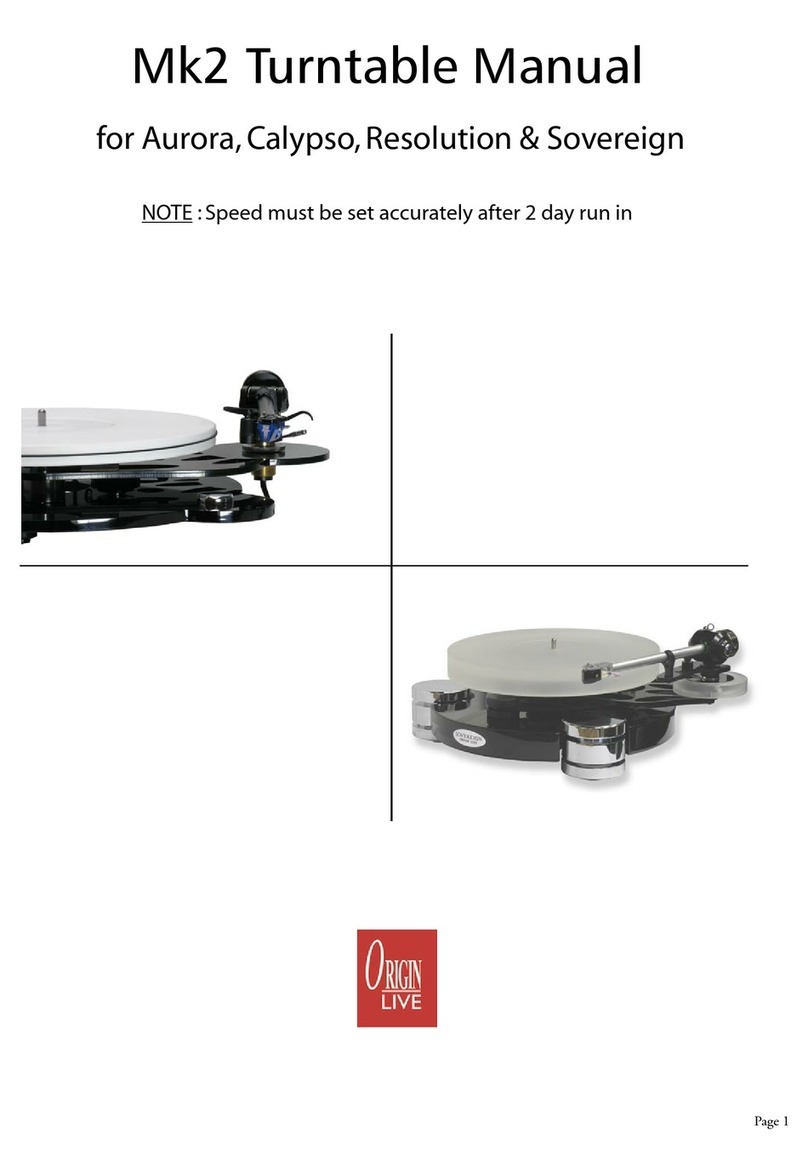Page 7
-The motor and main bearing will take at least 4 days to fully
run in and sound it’s best. For this reason it is best to do a final
speed check at the end of this period.
The speed stability of your deck will be excellent once
everything has settled down in a listening session.
When checking speed - Be aware that the speed is subject
to temperature variation. This is due to oil thickening as the
temperture drops. 1 degree centigrade drop in temperature
results in a 0.1% drop in speed ( a 5 degree drop will be 0.5%
slow). 0.5% speed drift is barely noticable to the average
listner so this is not significant. Rega decks used to run 1% fast
all the time to put things in perspective.
The ear is less tolerant to music running slow than it is to
fast. For this reason it is worth setting the deck to run very
slightly fast at your average room temperature. Most houses
are centraly heated and maintain the temperature such that
significant variations simply do not occure.
Note that the main bearing and oil can take 2 hours to reach
operating temperature if the deck is left in a cold room. The
air in the room may warm up quickly but the metal in the
turntable will take a lot longer. For this reason it is not worth
constantly changing speed settings for absolute accuracy.
It is worth explaining that absolute speed accuracy is easy
to achieve at the expense of sound quality. The ac motors,
common to most decks are not prone to speed drift - however
they do inject a great deal of vibration. This, sadly is never
measured in technical reviews or people would be a lot wiser.
The subjective effect of vibration is highly detrimental to
sound quality when compared to fractional speed drift. For
this reason we prefer to offer superior sound quality rather
than the flawed illusion of technical perfection.
Further to this it is worth adding that we have experimented
with the latest highly sophisticated dc speed controls (£1000
plus trade cost) and found that although they hold speed with
unerring accuracy, the sound and dynamics of the music are
degraded to such a degree that a little speed drift is far more
preferable.
FINAL SETUP OF TONEARM
Refer to your tonearm instructions. Use the following, only as
a rough guide on aspects relevent to the turntable.
VTA (vertical tracking adjustment)
To allow the cartridge needle to track at the correct angle it is
important that the base of the arm is at the correct height in
relation to the platter - this can be set by rotating the chrome
threaded VTA adjuster supplied with the deck for Origin Live
and Rega derived arms. One complete turn of the adjuster
clockwise raises the arm 1mm. For Origin Live arms that
have an integral vta adjuster the threaded vta adjuster is best
ommitted.
Fit the arm cable clip
Pass the arm cable through the cable clip and fasten in position
with the nut & bolt supplied. Leave a slight droop on the
cable so that it isn’t “tight”. The clip fastens to the underside
of the plinth using the hole near the rear foot. This is helpful
to “earth” vibration in the cable. The earth lead should be
connected to the earth of your pre-amplifier or amplifier. This
earth lead is best separated slightly from the arm signal leads so
do not wind it around them for best performance.
Note - The linear flow 2 cable is thicker than most, use the
larger cable clip to cope with this - if the cable is problamatic
to bend round the confines of your particular set up, then you
will not lose a great deal of performance by simply not using
the arm clip.
UPGRADES
It is possible to upgrade the turntable
Further upgrades would be
Origin Live upgrade platter mat for Aurora only
Upgrade Transformer - (Sovereign includes this as
standard)
MAINTENANCE OF DECK
It aids performance to clean all the running surfaces every 3
months or so with mentholated or surgical spirit but do not
use this on a flat belt.
Flat belts benefit from a 6 monthly application of any rubber
care product - typicaly found in car accessory stores.
To clean the deck, use a damp soft lint free cloth and wipe
gently – if you have grease marks etc then you can use a
general-purpose anti-smear, car window cleaner such as
Autoglym Fast glass, but only if necessary – wax furniture
polish is to be avoided . Do not spray directly on the turntable
as it may clog up the cartridge etc but rather spray onto a
soft polishing cloth and then use it on the turntable. Do not
use tissue paper or kitchen cleaning paper towels as paper is
abrasive and can put faint scratches in the polished surface.
If you do get minor abrasions on the surface then you can remove
them using a fine car paint abrasive polish such T-cut or Autoglym
paint renovator - this is especially usefull to remove stubborn grease
marks on the platter.
Keep the turntable packing box for secure future transport.
The deck is not prone to going out of tune - Check that the
sub-chassis damper is tensioned lightly onto the plate every 2
years or so as the damping can compress a little over time.
Depending on your use of the deck, the belt should ideally be
replaced every 2 years or so.
If you withdraw the main spindle you should put in a drop of
oil in the bearing, to compensate for any possible loss.
TROUBLESHOOTING
Omit reading this greyed out section unless you have a problem
SPEED VARIATION
If there is significant speed variation then possible causes are as follows.
